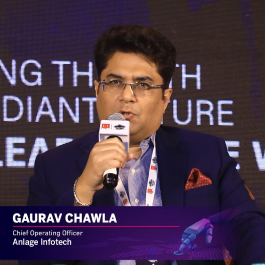

The Build-Operate-Transfer (BOT) model is an increasingly popular strategy for organizations looking to expand their global footprint while optimizing costs and mitigating operational risks. Originally rooted in large infrastructure projects, BOT has evolved into a powerful approach for establishing offshore or nearshore operations — especially for setting up IT hubs, R&D centers, or Global Capability Centers.
Imagine launching a fully operational, high-performing offshore development center — without the headaches of setting it up from scratch or the long-term uncertainties of outsourcing. That’s the power of the Build Operate Transfer model.
In this article, we’ll break down how to successfully execute a Build Operate Transfer project, the stages involved, and the critical best practices that turn theory into results. Whether you’re a multinational eyeing new markets or a fast-scaling tech startup with global ambitions, the BOT model offers a scalable, low-risk path to global expansion — if done right.
A Build Operate Transfer project unfolds in three distinct stages — each requiring strategic foresight and flawless execution.
In the Build phase, the foundation is laid. This includes identifying the right location (often with a cost-advantage like India or Eastern Europe), navigating regulatory frameworks, acquiring real estate or facility space, and establishing the physical and digital infrastructure. Choosing a partner experienced in setting up offshore development centers can significantly accelerate this process.
Talent acquisition is a critical component here. By leveraging specialized Talent Solutions, organizations can rapidly hire the right skill sets across functions — from tech and product development to HR and finance. In some cases, AI recruitment tools are deployed to streamline and improve the quality of hiring decisions.
Once the infrastructure is ready and the team is in place, operations begin. During this stage, the delivery partner (BOT service provider) manages day-to-day operations, aligns processes with the parent organization’s standards, and ensures knowledge transfer and cultural integration.
The Operate phase is when performance benchmarks are established, governance mechanisms are put in place, and KPIs are closely monitored. This is also when most clients begin to see the tangible benefits of the BOT model — optimized costs, local market access, 24x7 operations, and operational excellence in line with global standards.
This phase may also include setting up shared services functions such as finance, legal, compliance, and HR, which support core operations and help build a self-sustaining ecosystem.
After the operation matures and the pre-agreed timeline or milestones are met, the entity is transferred to the client — legally, operationally, and managerially. The client now owns and runs the fully functional entity. The smoothness of this handover is the ultimate litmus test of a successful Build Operate Transfer project.
The transition should be backed by thorough documentation, knowledge repositories, succession planning, and continued support from the BOT provider for a fixed time if required.
Executing a Build Operate Transfer project is not without its challenges. However, with the right strategy, you can ensure success across all three stages.
Not all BOT providers are created equal. Look for one with a proven track record, deep knowledge of local regulations, access to skilled talent, and the ability to scale operations efficiently. Preferably, select a partner that offers integrated GCC solutions — including legal, compliance, HR, and IT infrastructure setup — so you can focus on core business outcomes.
A shared vision is critical. Clear communication of goals, KPIs, timelines, and expectations will reduce friction and set the tone for collaboration. It also helps to align on the exit criteria and what a successful “transfer” looks like from day one.
People are the core of your Build Operate Transfer project. Ensure your talent strategy includes not just hiring, but also onboarding, upskilling, performance management, and retention. A mix of local leadership and expat alignment can create a strong cultural bridge with the parent company.
Just because the new entity is geographically separated doesn’t mean it should feel culturally alien. Build mechanisms for team alignment, regular engagement, and leadership visibility. This builds trust, improves collaboration, and accelerates integration during the Transfer phase.
Create a robust governance framework to monitor progress, manage risks, and ensure compliance. Use dashboards, review mechanisms, and escalation paths. These will be vital in keeping the project on track and enabling a smooth transition to the final ownership phase.
While the Build Operate Transfer model is powerful, companies can stumble if they overlook certain realities:
In today’s dynamic business environment, the Build Operate Transfer model offers a smart alternative to traditional outsourcing or captive setups. It gives organizations the best of both worlds — the speed and cost-efficiency of a partner-run operation and the long-term value of owning a strategic global asset.
Moreover, with growing interest in Global Capability Centers, BOT has emerged as a go-to model for companies looking to establish a physical presence in talent-rich geographies like India, Eastern Europe, or Southeast Asia. These centers act not just as cost-saving hubs but as centers of innovation, product development, and strategic growth.
A Build Operate Transfer project, when done right, is a game-changer. It enables organizations to access world-class talent, scale globally, and gain operational excellence without taking on the risks of doing it all alone. From building an offshore development center to setting up a fully owned GCC, the BOT model unlocks strategic flexibility.
By focusing on the right partner, aligning on goals, investing in people, and executing with discipline, companies can turn their Build Operate Transfer vision into a thriving reality. And in a world where speed, scalability, and resilience matter more than ever, that might just be your next competitive advantage.
If you're considering expanding globally and want a tailored roadmap for executing a successful Build Operate Transfer project, now is the time to explore how strategic Talent Solutions and tech-enabled operations — including AI recruitment tools — can empower your journey.
Let BOT be more than just a model — let it be your strategic enabler.

Gaurav Chawla, COO of Anlage Infotech, emphasized the transformative role of AI-powered analytics in HR at the 5th Edition of the GCC Summit 2024. Highlighting predictive analysis and smart tool utilization, he shared how these technologies can cut hiring cycle times by up to 60%, driving greater efficiency. The event took place at GMR Aerocity Hyderabad.
READ MORE